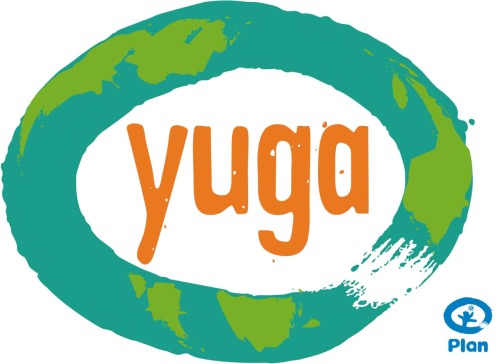This post comes from Gargie, a youth activist who participated in this year’s YUGA Leadership Summit in Bristol, Rhode Island. You can learn more about the Regarding Humanity initiative she writes about, and go on to explore the online work of Linda Raftree and Lina Srivastava, the two leaders of this workshop at the Summit.
During the YUGA Leadership Summit, the Visualizing Humanity workshop was my personal favorite. We discussed the issue of “poverty porn,” a term that represents the exploitation of people by means of film or photography in order to create sympathy in the viewer. This workshop was incredibly thought-provoking and introduced a topic that was entirely new to me.
I never realized the false impressions that advertisements can have on a person’s perception of, for example, the people of Africa. These ads generally depict a starving child who they claim cannot survive without your help. The image of a boy in sooty and tattered clothing with skin clinging to his rib cage is enough to create compassion in the viewer and is more likely to bring in donations. However, after being bombarded by these photos and videos, a viewer may no longer perceive Africa as a continent like any other, but assume it is exclusively filled with poverty-stricken communities.
I commend the efforts of Mama Hope as well as others for their efforts to combat poverty porn. Their videos help us understand the people and communities of different countries, and allow us to relate and connect with them.
Gargie, on the left, with Sokhna and Johnnie, two other YUGA members. After the Summit, they participated in another workshop focusing on the needs of girls after natural and man-made disasters, and their input will become a part of a Girl Report created by the Because I Am a Girl campaign.
However, there is also a flip side to this issue. I completely agree that it is wrong to take photos of people and use them in ways that strips them of their dignity and pride. I can only imagine how worthless I would feel if photos of me were shown in ways that suggested I would not be able to survive without the help of others. No one wants to be pitied; we all want to be treated as equals. But at the same time, if businesses are claiming that they receive more donations by showing these images, then it becomes difficult to argue with them. After all, if the money goes to a good cause and this is an effective way to increase donations, perhaps it is ultimately worth it.
So where do you draw the line? Which issue has greater value: receiving donations for a good cause or maintaining the dignity of people from other countries? How do we choose one over the other? Most important, how can we help correct the misconceptions created by these organizations?
As I evolve my own opinions on this matter, I encourage others to do the same and educate others on this issue.
Related articles
- sokhna: 35 voices are louder than one (yugaplanusa.wordpress.com)
- alma: starting the first YUGA chapter in Wisconsin! (yugaplanusa.wordpress.com)
- emily: fighting for girls’ rights (yugaplanusa.wordpress.com)
- top 10 moments from the YUGA Summit (yugaplanusa.wordpress.com)


Great post and great question at the end, Gargie. I hope we can generate some dialogue and discussions around this, and look forward to hearing others’ thoughts too!